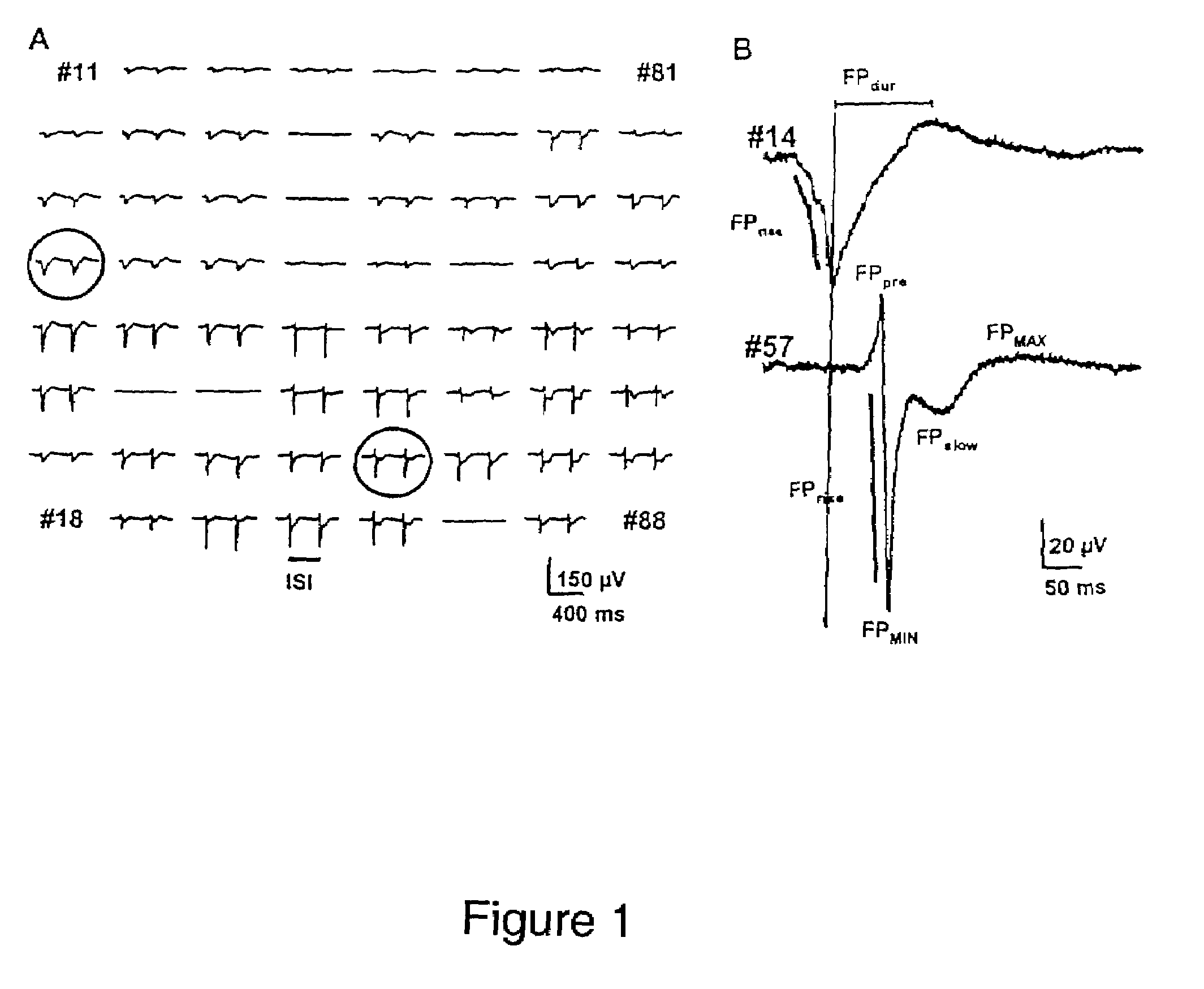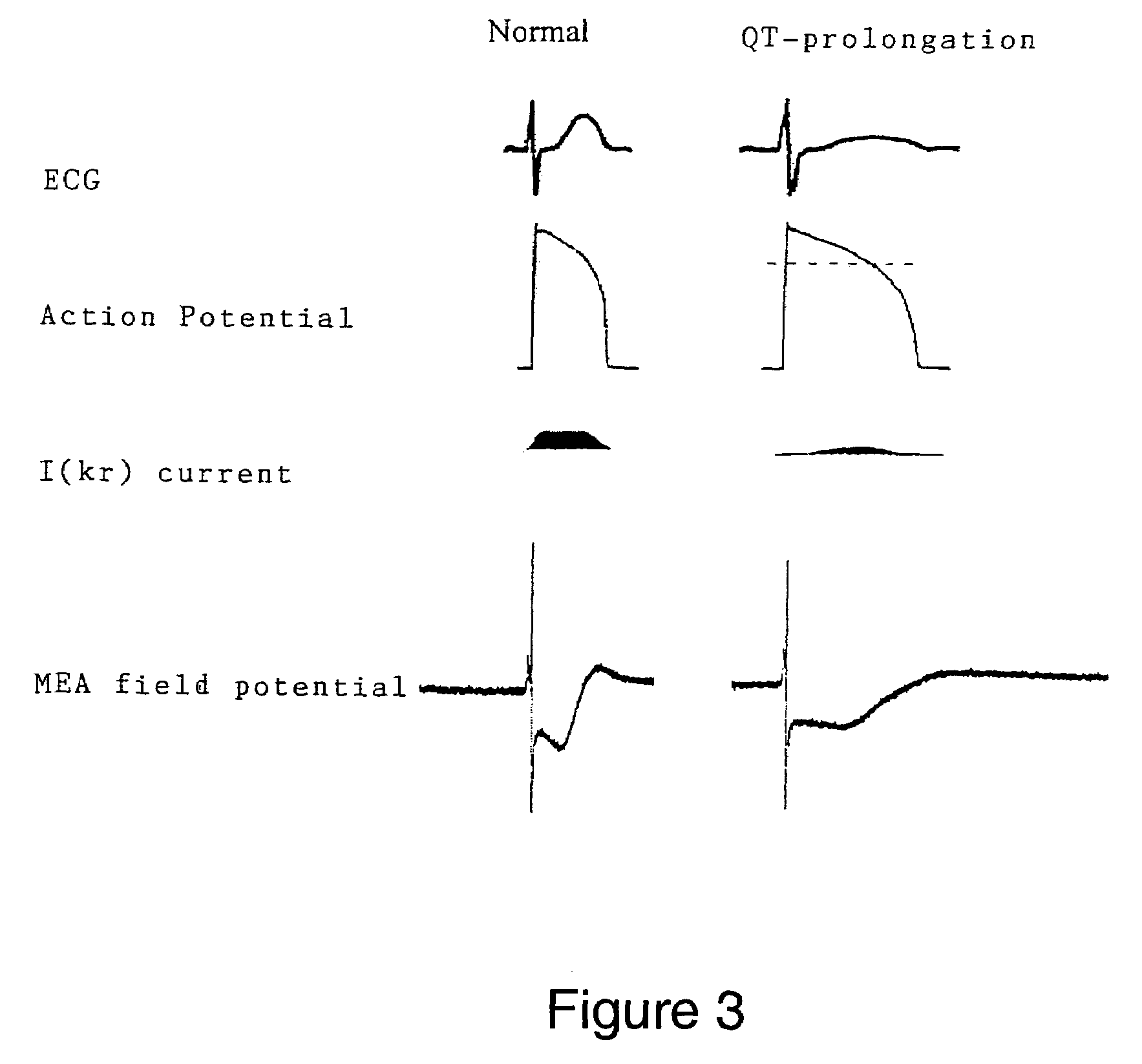Method for determining the influence of a test substance on the heart activity of a vertebrate
a test substance and vertebrate heart activity technology, applied in the direction of material testing goods, biochemistry apparatus and processes, skeletal/connective tissue cells, etc., can solve the problems of unfavorable patient safety, unfavorable patient safety, and unfavorable patient safety, etc., to achieve quick and inexpensive results
- Summary
- Abstract
- Description
- Claims
- Application Information
AI Technical Summary
Benefits of technology
Problems solved by technology
Method used
Image
Examples
example 1
Determination of FP Parameters
[0055]Heart cells from mouse embryos were cultured in DMEM supplemented with 20% FCS, L-glutamine (2 mmol / L) and nonessential amino acids (all chemicals from Sigma-Aldrich). A drop of the cell suspension (107 cells / ml) was placed on an MEA produced by the Applicant and having 60 microelectrodes. After attachment of the cells, culture medium was added to give a final volume of 800 μl. After 1 to 3 days in culture, the cells formed a confluent monolayer of multicellular aggregates which showed spontaneous beating activities.
[0056]The FP wave shapes measured with the MEA after 4 days in culture are shown in FIG. 1A. Different FP wave shapes were recorded on different microelectrodes, of which two representative examples are shown enlarged in FIG. 1B.
[0057]The field potential shows in each case a recurring pattern in the beat rhythm with a first minimum FPmin and a last maximum FPmax, where FPmin and FPmax could in each case be preceded by a further maximum...
example 2
Influence of QT-Modifying Substances on FPdur
[0060]In a method comparable to Example 1, ventricular myocytes from chicken embryos were in this case cultured on the MEA. The heart muscle cells were obtained by trypsin digestion of the isolated ventricle of chicken embryos (10-12 days after fertilization). The heart was freed of blood vessels and atria. The cells were cultured in MEM medium supplemented with 10% fetal calf serum (FCS). One to two days before the measurement, the medium was replaced by standard Tyrode solution.
[0061]The heart cells were again cultured on the MEA, the derivation and recording time being 10 minutes, which in most cases proved sufficient to permit conclusions to be drawn in this control experiment concerning heart rate and stability of the QT interval.
[0062]The standard Tyrode solution was then replaced by a Tyrode solution with 5 μM of a test substance and the change in FPdur was determined. Thereafter, the concentration of the test substance was increas...
PUM
| Property | Measurement | Unit |
|---|---|---|
| volume | aaaaa | aaaaa |
| electrical potentials | aaaaa | aaaaa |
| conduction time | aaaaa | aaaaa |
Abstract
Description
Claims
Application Information
 Login to View More
Login to View More - R&D
- Intellectual Property
- Life Sciences
- Materials
- Tech Scout
- Unparalleled Data Quality
- Higher Quality Content
- 60% Fewer Hallucinations
Browse by: Latest US Patents, China's latest patents, Technical Efficacy Thesaurus, Application Domain, Technology Topic, Popular Technical Reports.
© 2025 PatSnap. All rights reserved.Legal|Privacy policy|Modern Slavery Act Transparency Statement|Sitemap|About US| Contact US: help@patsnap.com



